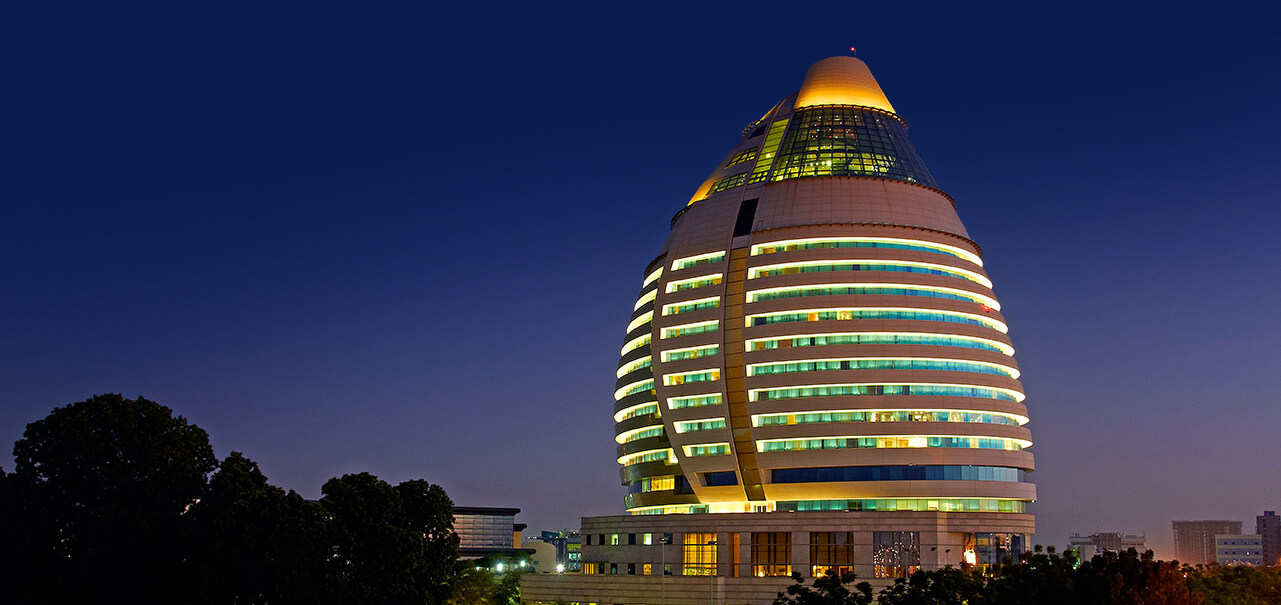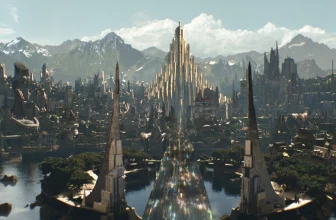‘To work within a tradition requires a certain acceptance of the limitations it brings; but if these limitations are understood to be inevitable consequences of man’s position within nature but outside Paradise, outside of Utopia, they will be perceived not as constraints but as the simple and natural containment of human action, including creativity.’ (Robert Maxwell)
Leon Krier noted pointedly that there is ‘either architecture or the absence of architecture” highlighting that architecture in itself implies uncompromising standards of design, art, tectonics and execution without which there could not be question of architecture. Architecture cannot be, either or, ‘beautiful’ or ‘ugly’; it is Architecture or it is not! Compromising in design and building with the ideals of appropriateness, beauty, solidity, permanence, as well as the ideals of “the Common Good”, means abandoning the very realm of architecture.
Asking “What is Architecture” then, is a legitimate question. It has been asked and answered innumerable times, by each new generation probably, if not repeatedly in each generation. Inheriting a pre-existing, fragmented world shaped by preceding generations, which it continues to alter and develop before leaving it to successive generations, each generation needs to assume both past and future, sometimes despite of itself, and contribute to the preservation, construction and remodeling of the world, and take responsibility for change, or destruction – all share in the responsibility for reconstruction, and have to re-assimilate and re-think the legacy of knowledge, experience and culture which will provide the foundation to be built upon.
“What you have inherited from your ancestors must be earned before it can be possessed.” (Johann Wolfgang von Goethe) Culture and the skill of the artist and the artisan are not genetically safeguarded in the same way as the inherent, intrinsic reason, wisdom and inexhaustible skill of nature. Man has not only to keep reminding himself of the achievements of the past, but also to learn them over and over again. He has to re-invent his world and humanity constantly and continually. “Memory is about remembering and forgetting” as Roberto Behar pointedly reminded me of.
Culture and the skill of the artist and the artisan are not genetically safeguarded in the same way as the inherent, intrinsic reason, wisdom and inexhaustible skill of nature. Man has not only to keep reminding himself of the achievements of the past, but also to learn them over and over again. He has to re-invent his world and humanity constantly and continually. “Memory is about remembering and forgetting” as Roberto Behar pointedly reminded me of.
Because this process of learning, invention and creation – or re-learning, re-creation and re-invention – is continuous, there is always a legacy of ‘remembering and forgetting’, but above all a culture of building, a tradition, for one generation to pass on to the next, a legacy of a finished world to an unfinished humanity. Occasionally alas there can be a “Culture of Forgetting” only, and these periods are called “Dark Ages”.
This relentless sequence of ‘re-culturing’ is dependent on stable conventions which guarantee its continuity, efficiency, and equilibrium. Without a commitment to permanence a common world would be impossible (cf Hannah Arendt in The Human Condition), and continuity and permanence are the basic conditions of this resilience of memories, experiences and conventions which form the ferment and support of a beautiful, comfortable and lasting world.
The building and re-building of the world, the homeland, ‘Patria’ and the home needs to guarantee the continuity of a ‘common world’, safeguard a ‘sense of place’, and foster a living ‘identity’. The ‘new world’ we are born in each of us, and which is constantly in a process of change, invention and adaptation cannot be ever the ‘same’ nor a repetitive ‘revival’, but strives to the emulation and constant perfection of itself, endeavoring to unfold ever new layers of a enhanced identity, of a better ‘self’. The traditional process of creation and recreation is inspired by ideals of a familiar world articulating the mythical prospects of ‘Time and Place’ in an operational synthesis, a synthesis where ‘Genius Loci’ and ‘Zeitgeist’ are at peace. In this synthesis the permanence of ‘Genius Loci’ and the impermanence of ‘Zeitgeist’ agree upon vital tactical synergies allowing for a perpetual ‘modernity’ and timeless inspiration of living building traditions. The Province and the Universe
The Province and the Universe
Tradition has, on the one hand, a dimension of timelessness and universality, being the ‘selected wisdom’ of people throughout the ages and, on the other hand, a character of local and geographical specificity. It fuses universal principles of art, architecture and city-building with geographical, cultural and historical peculiarities inherent to the ‘Canton’ (Colin Rowe’s term for that part of the world clearly delimited in geographical and sentimental terms, which we call our homeland or ‘Patria’.) This attachment is not a state of uncritical, static subordination to mummified customs, reactionary nostalgia, rigid conservatism, but an inventive and creative commitment to the homeland and the home. Change and Stability
Change and Stability
‘Tradition arises from the selected wisdom of the entire people,’ says Ricarda Huch. Her statement correctly stresses the active and genuinely creative dimension of tradition. Tradition is not concerned with an undiscerning agglomeration and clustering of the whole global heritage of past times, but with the careful selection of the best, the most beautiful and the most effective of mankind’s achievements throughout history.
Tradition is emphatically not a rigid dogma, but a living, organic ecological project. It has nothing to do with obscurantist practices, reactionary customs and irrational revivalism. Tradition is always young, fresh and new; not a helpless defense of the old, the ancient, or the antique. It is a project about continuity based on memory, commonsense, and experience. Thus it would be erroneous to regard tradition as the antithesis of modern inventiveness: tradition is the very foundation of invention. It is the permanent embodiment of invention, discovery and perfection. Tradition fosters a perpetually organic ‘Modernity’, in what Johann Wolfgang von Goethe calls an ‘eternal newness’ and a ‘new excellence’.
“There is nothing past for which one may yearn, there is only an eternal newness which is shaped by the wider elements of the past and true nostalgia has always to be productive to create a new excellence.”
(J.W. von Goethe) A Perpetual Becoming
A Perpetual Becoming
“Impermanence is a principle of harmony. When we don’t struggle against it, we are in harmony with reality.” (Pema Chodron)
Now Tradition acknowledges the principle of ‘Impermanence’ and is not the opposite of ‘Modernity’ as often erroneously stated. It is not contrary to ‘Change’ but in reality the very catalyst of a necessary, organic and evolutionary balance between permanence and change. It is not opposed to change but to unnecessary change and excessive obsolescence which are enforced on the world by Modernism. Rather than opposing ‘Impermanence’ it transcends inertia and stagnation with a permanent ‘Newness’ proposing what Buddhism defines as a ‘Continuous Becoming’ . It is neither ‘conservative’, nor ‘progressive’ but an ‘eternal becoming’.
“Early Buddhism declares that in this world there is nothing that is fixed and permanent. Everything is subject to change and alteration. “Decay is inherent in all component things,” declared the Buddha and his followers accepted that existence was a flux, and a continuous becoming.” (Wikipedia) Tradition versus Modernism
Tradition versus Modernism
The destruction of the natural and built environment, the despoliation of whole regions, landscapes, cities and villages, and the alienation of communities suggest the monumentality of a failure, a failure of civilization, – it is the failure of modernism. After having enforced compulsive change as the principal motor of culture, society and economy it has paradoxically achieved a ‘durability’ of the ephemeral and a ‘logics’ of randomness. The ‘permanent revolution’ of the modernist ‘Avant-Garde’ has become mainstream and conservative, it is now the art of the ‘Establishment’; the ‘Avant-Garde’ has become a ‘Rear-Guard’. . Its ‘aesthetics’ of degradation, deconstruction and arbitrary artificiality pretends to transcend the crisis of Modernism and produces widely consumable new paradigms of Art, Science and Technology. It full-heartedly celebrates “Parametricism”, “Deconstructivism” and “New Subjectivism” in computer-drunken imagery of a clueless future and redundant ‘futurism’. The global scale of spiritual and material pollution reaching deep, both into political, economic and cultural geology as well as into astral space, etc. not only causes ‘Climate Change’, but an erosion of civilization preluding unpredictable ecological and political tragedies many present, and yet many to come. Modernism continues battling the specters of ‘Golden Ages’ in the Classical past, and the sustainable and ecological potentials of a better future outlined successfully by contemporary traditional architects and urbanists. It is rattling its skeletons and resuscitating its zombies and vampires of its incomplete utopias in a vigorous contemporary crusade against beauty, comfort, and solace.
‘Modernism’ as an official culture had, and still has enormous, if not imperial-dictatorial power to achieve quite pompous aims of industrial, post-industrial or technological ‘Utopia’. It benefitted from unlimited investments and ideal political opportunities to enforce a more beautiful, healthy, equitable world and foster global solutions of peace, justice and harmony. An objective survey of its results however reveals a wasteful experiment which has disdainfully set aside the wellbeing of humanity and proved incapable of building a comfortable, beautiful, and lasting world. The Modernist claim to a ‘Tradition of Modernism’ is eventually a contradiction in terms, or maybe more accurately a rather gloomy and fateful predicament of a lasting cultural disruption. Abstraction, alienation and fragmentation, and the deliberate and global destruction of traditions have created desolation, chaos and problems stretching in a far future leaving innumerable challenges for generations to come. Unknown quantities of nuclear and toxic waste stored or dumped throughout the world, the irremediable extinction of animal and vegetal species, and the fatal sequence of an industrial metabolism leading to ‘Global Warming’ and ‘Climate Change’, etc. have all been led in the wake of a world liberated from Antique or ancestral traditions, unchaining the highest levels of greed, cruelty and selfishness human civilization has ever experienced. The world seems to be constantly in preparation of war and in fear of terror, rather than in search of peace; the earth is worn out by the systematic, massive and universal exploitation and a methodical poisoning and intoxication, and is metamorphosing from an earthly Paradise into an unliveable hell.
Resistances have emerged, ‘Anti-Industrial Movement’, ‘Anti-Global’, “Green Movement”, “Occupy” actions etc. working in all parts of the world to develop alternative proposals and projects in the context of a global strategy of emancipation from “top-down” anti-democratic leadership, social, ethnic, gender, and economic discrimination, and from mono-cultural indoctrination and globalization.. “One World, Many Traditions”, the motto developed by INTBAU (International Network for Traditional Architecture and Urbanism) headed by HRH The Prince of Wales, is not only a most intelligent and compassionate claim for diversity and sustainability, but a logical shortcut for cultural democracy at a ‘glocal’ dimension. These resistances are deriving increasing support from a genuinely popular uprising inspired by a militant nostalgia, a nostalgia for a better ‘newness’ and for a ‘contextual’ and ‘consensual’ modernity. Fortunately this nostalgia, ‘the last fortress against industrial Modernism’ (cf. Leon Krier) has reassessed ‘tradition’ as a frontier rather than as a boundary. Tradition, a ‘Frontier’, not a Boundary!
Tradition, a ‘Frontier’, not a Boundary!
The resurrection of an eco-logical and humanist-humanitarian tradition will not be an easy task: many ruins have to be fixed, many wrecks have to be lifted, everything has to be reconstructed, reinvented, re-imagined. The reconstruction of a sustainable, livable and beautiful world will depend on the originality, freshness and modernity of a tradition which acknowledges creatively and critically the local and the universal, and allows for being continuously scrutinized, revised and perfected. Not surprisingly, neither the evidence of facts, experience and research, nor the intuition of common sense and appropriateness help making wise and purposeful action any easier.
“Men are vexed because truth is so simple. But they should realise that it is not so easy to apply it to their advantage.” (Johann Wolfgang von Goethe)
The contemporary and ‘militant’ practice of traditional architecture and urbanism are thus not part of the resurgence of folklore, but a significant contribution towards the rehabilitation of the theoretical, metaphysical and practical, eco-logical and economic principles of architecture and urbanism. Tradition must neither be misunderstood as a static inventory of historical forms and customs, nor should it be synonymous with a free-wheeling re-interpretation, and playful extrapolation of images, forms and patterns of the past. The concept of ‘tradition’ itself derives from the Latin ‘tradere’, which means continuing and handing over; it is a dynamic process; it is a flow; it is deriving from choices, and is not a ‘fatality’ as Leon Krier insists in his book ‘Fate or Choice’.
Tradition is involved in a rigorous and rational process founded on serious academic, scientific, philosophical and professional criteria. The concepts of continuity, permanence, as well as ‘change’ are inseparable from that of a living tradition. The process of continuity suggests a development through time and space in which change and permanence, preservation and renewal, decay and restoration, tradition and modernity, etc. are not contradictory or exclusive, but inseparable and complementary. A truly living tradition provides a vibrant strand of continuity and creativity and bridges through all the changes, obstacles, and accidents of history. Tradition generously embraces the human need for a comfortable, beautiful and permanent world where the ‘permanence of change’ does not mean perpetual disorientation and discomfort.
Traditional Architecture is not a Style
Traditional architecture is guided by the universal ideals of Classicism and fostered by the timeless heritage of vernacular cultures. Besides the formal, constructive, technical and tectonics, it is thoroughly interested in the ethics of building practice. The moral, spiritual, cultural as well as the ecological dimensions of building are its predominant concerns.
‘Classical architecture is not a style’, as brilliantly elaborated upon by Demetri Porphyrios in “Classical Architecture”, and his comments on ‘Classicism’ as a ‘tradition’ are the most insightful as they transcend the usual historiographical classifications and style debates.
“Classicism is not a style, but a tradition that has evolved from and co-existed with the vernacular. It is a living tradition open to adaptation and interpretation, and responsive to region, climate, nature and culture.” – Demetri Porphyrios
Traditional architecture in its ‘Classical’, and its ‘Vernacular’ expression is not antagonistic to an architecture of ‘modernity’ as it contributes substantially towards a ‘global ecological reconstruction’ (cf. Leon Krier) of the contemporary world. Rather than being turned towards the past it addresses mainly the future as HRH The Prince of Wales repeatedly stressed: “My concern is the future”, and he continues “We have to work out how we will create resilient, truly sustainable and human-scale urban environments that are land-efficient, use low carbon materials and do not depend so completely on the car”.
Tradition is, and always has been, rooted in a harmonious equilibrium between man and nature, home and universe, body and mind, intellectual and manual culture, arts and crafts. Traditional architecture gives essential expression to the very ecological metabolism between man and nature. It also constitutes a perpetually ‘contemporary’ endeavor re-formulating architecture in relation to what it has always been, acknowledging, both history and myth, memory and imagination, and thus defining and reassessing its constant and universal principles, as well as its parameters of change and adaptation. Traditional architecture is not concerned with historical styles, but with historical principles; not with classifications, but with cultural and professional seriousness and integrity; not with academic quarrels and polemics, but with the conscientious study of time tested ,built and unbuilt precedents, designed, envisioned and tectonically, culturally, artistically vetted and assessed ; not with abstract and academic discourse based on arbitrarily ‘constructed’ and imposed ‘knowledge’ , but with projects and evidence based on the reality of tradition. If tradition is concerned with progress and modernity, it would be in a sense of authentic ‘contemporaneity’ as defined by Hassan Fathy:
Traditional architecture is not concerned with historical styles, but with historical principles; not with classifications, but with cultural and professional seriousness and integrity; not with academic quarrels and polemics, but with the conscientious study of time tested ,built and unbuilt precedents, designed, envisioned and tectonically, culturally, artistically vetted and assessed ; not with abstract and academic discourse based on arbitrarily ‘constructed’ and imposed ‘knowledge’ , but with projects and evidence based on the reality of tradition. If tradition is concerned with progress and modernity, it would be in a sense of authentic ‘contemporaneity’ as defined by Hassan Fathy:
“Now, if we are to reconcile time with the architect’s definition of contemporaneity, we must say that to be “relevant to its time,” to be “contemporary,” a work of architecture must fulfil these conditions: it must be part of the bustle and turmoil, the ebb and flow of everyday life; it must be related harmoniously to the rhythm of the universe, and it must be consonant with man’s current stage of knowledge of change.” (Hassan Fathy)
The practice of architecture remains essentially a pursuit of ideals. Architecture and city-building are necessarily imbedded in a desire of building; they encompass physical and moral changes in the built environment of human societies and propose the materialization of design visions. Architecture’s main purpose is to conceive in a consistent way good buildings and good cities in a perspective of preservation, perfection, construction and reconstruction of a beautiful, solid, comfortable and durable ‘Patria’. Fundamental Principles of Traditional Architecture
Fundamental Principles of Traditional Architecture
- Use of natural materials and eco-logical approach to natural resources.
- Intelligent and appropriate use of materials as regards their natural properties, qualities and limitations.
- Respect for local context in terms of materials, craftsmanship and architectural culture.
- Building methods based on the intelligent and creative synthesis of intellectual and manual skills, artistic and technological excellence, and a passionate commitment to environmental and bio-ecological responsibility.
- Geometric, logical and complex forms and spaces allowing the building of harmonious, comfortable, identifiable and well-articulated formal, spatial structures and places.
- Agreeable proportions, harmonies and scalar complexity developed from the analysis of the most successful traditional buildings, cities and places, as well as from the most updated scientific evidence on the ‘mathesis’ of the universe.
- Natural proportions derived from the study of the human body and from the study of nature in a context of ‘Imitation of Nature’.
- Imitation of time-tested models, patterns, typologies and morphologies, and constructive and decorative details.
- Creative, inventive and undogmatic, but logical and correct use of the permanent elements of architecture as they have been defined in the history of architecture, such as wall, column, entablature, cornice, roof, window, and door, and house, palace, monument, colonnade, arcade, passage, street, square, block, quarter and city, etc.
Written by Lucien Steil
Edited by: 嘉 Jia





